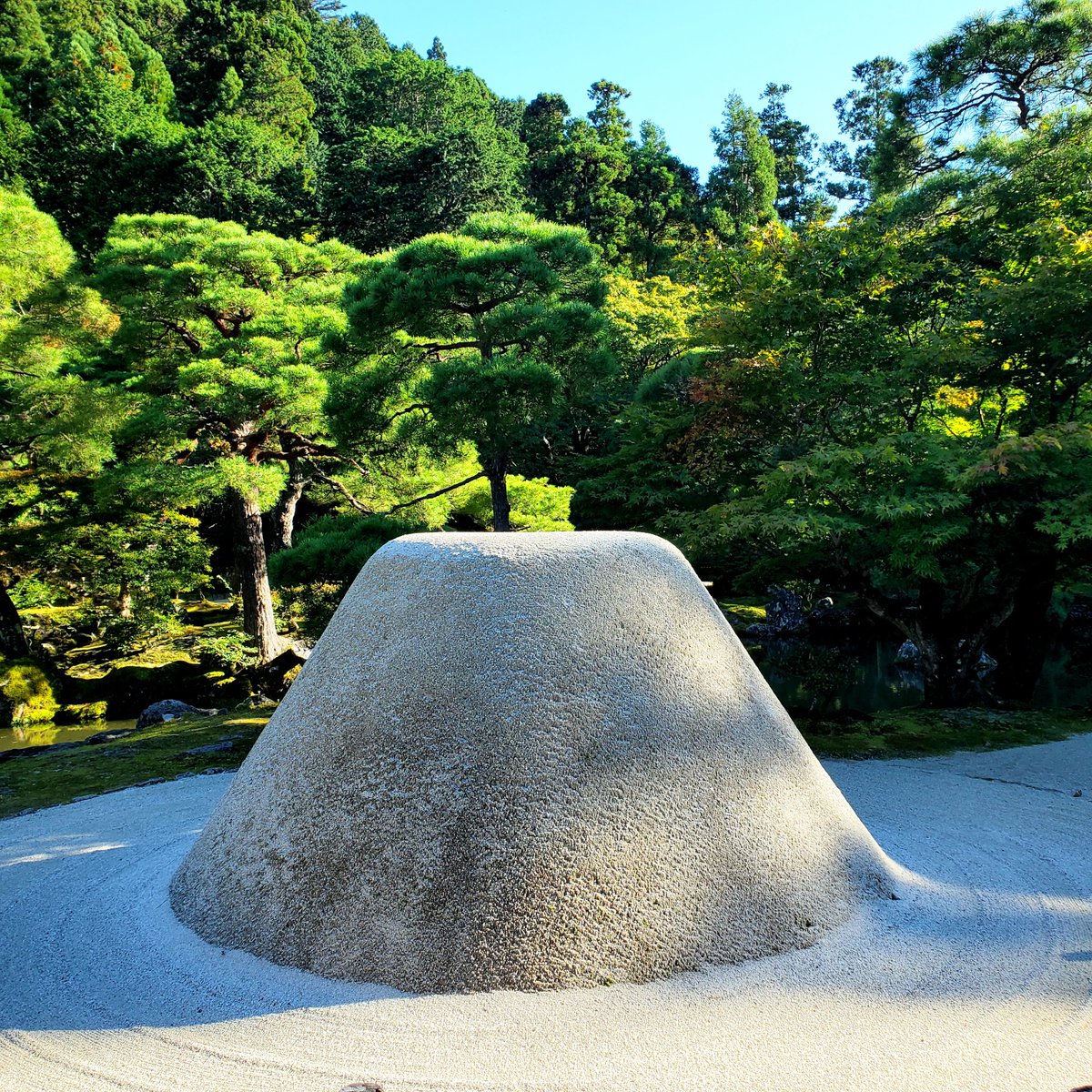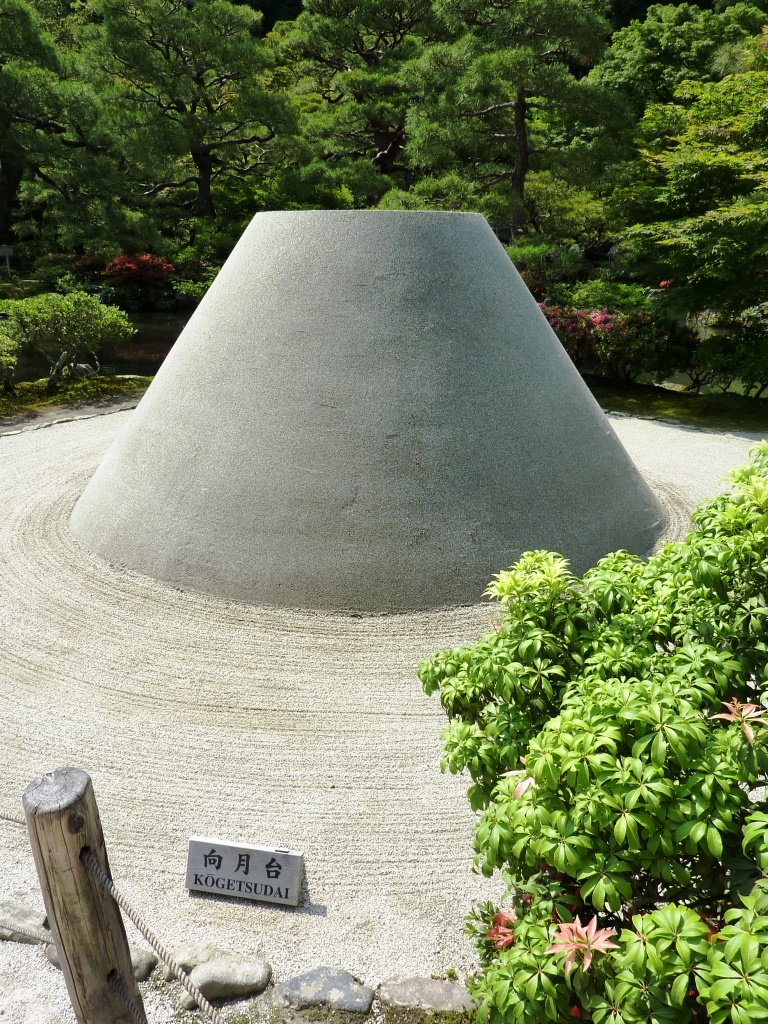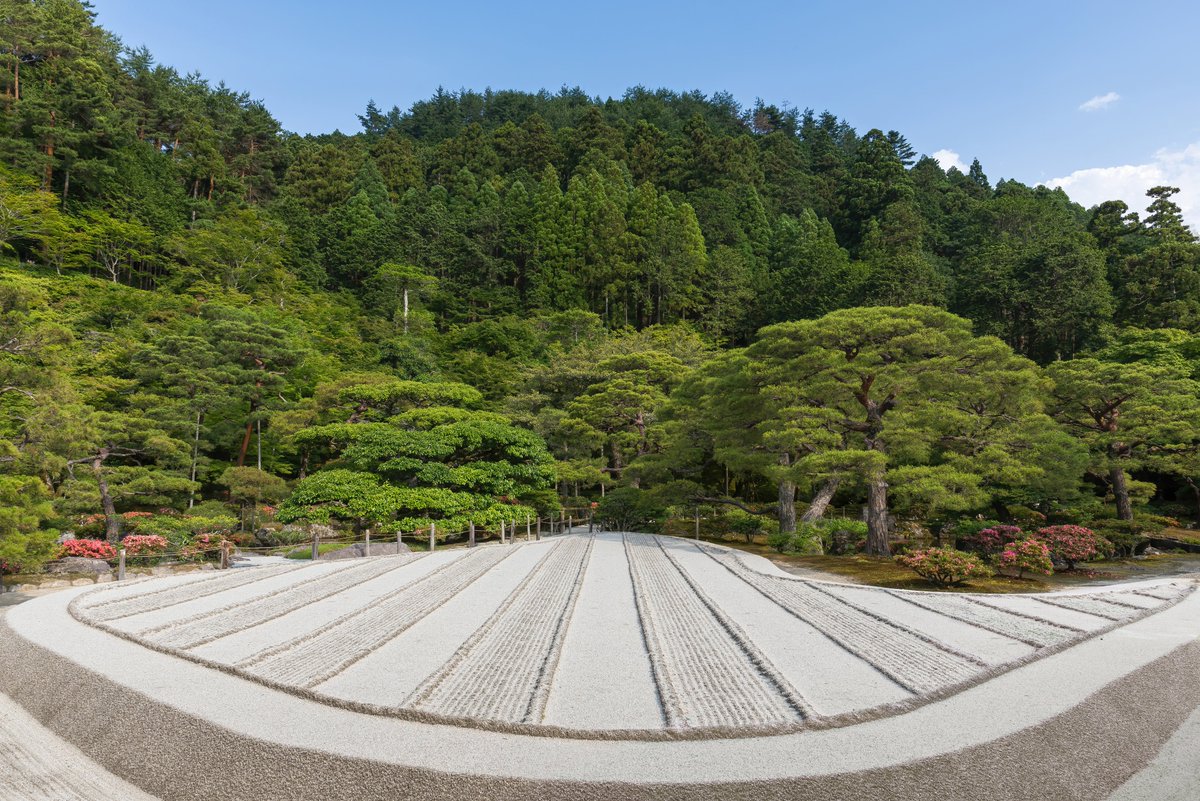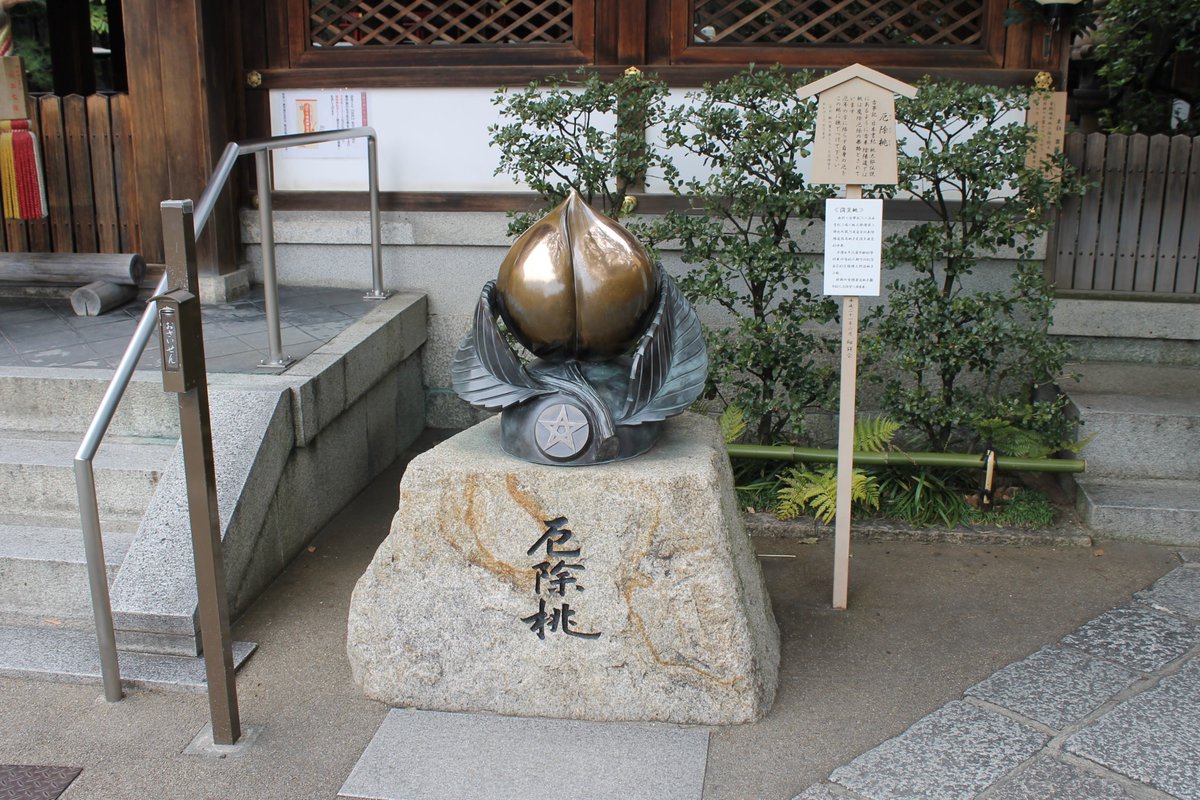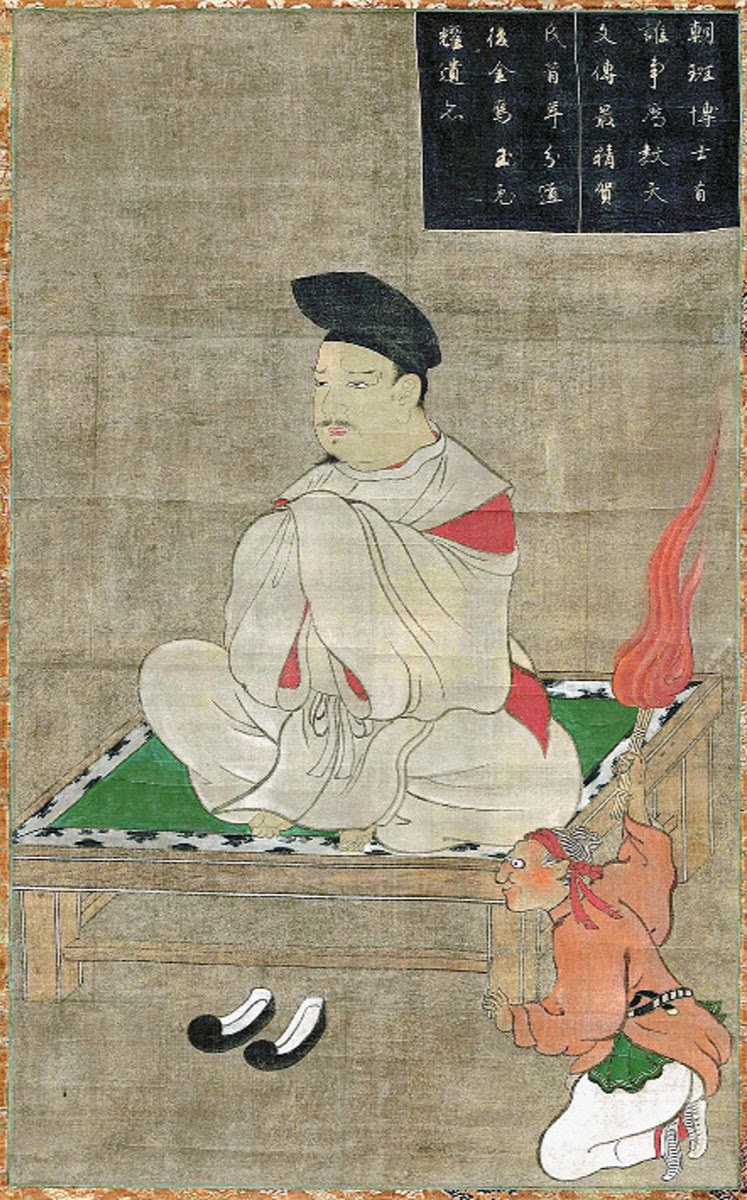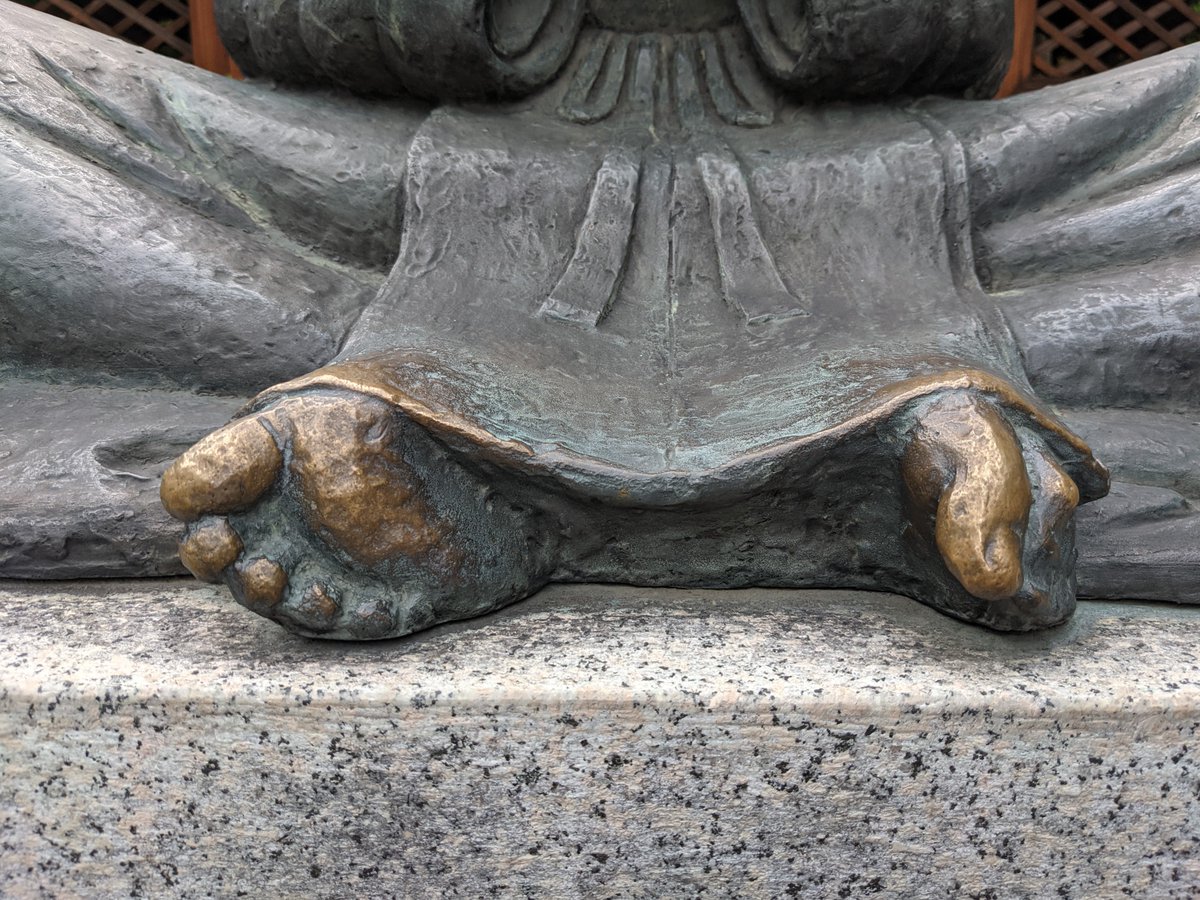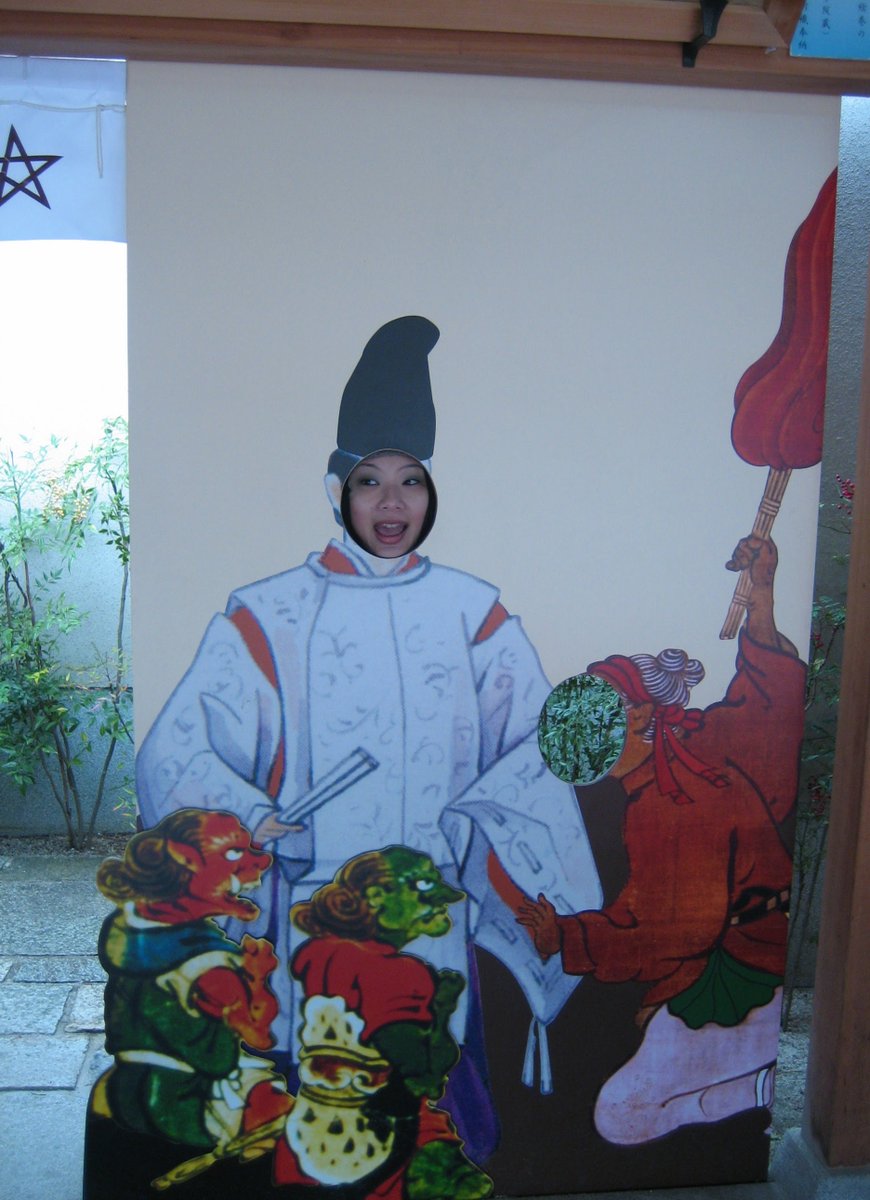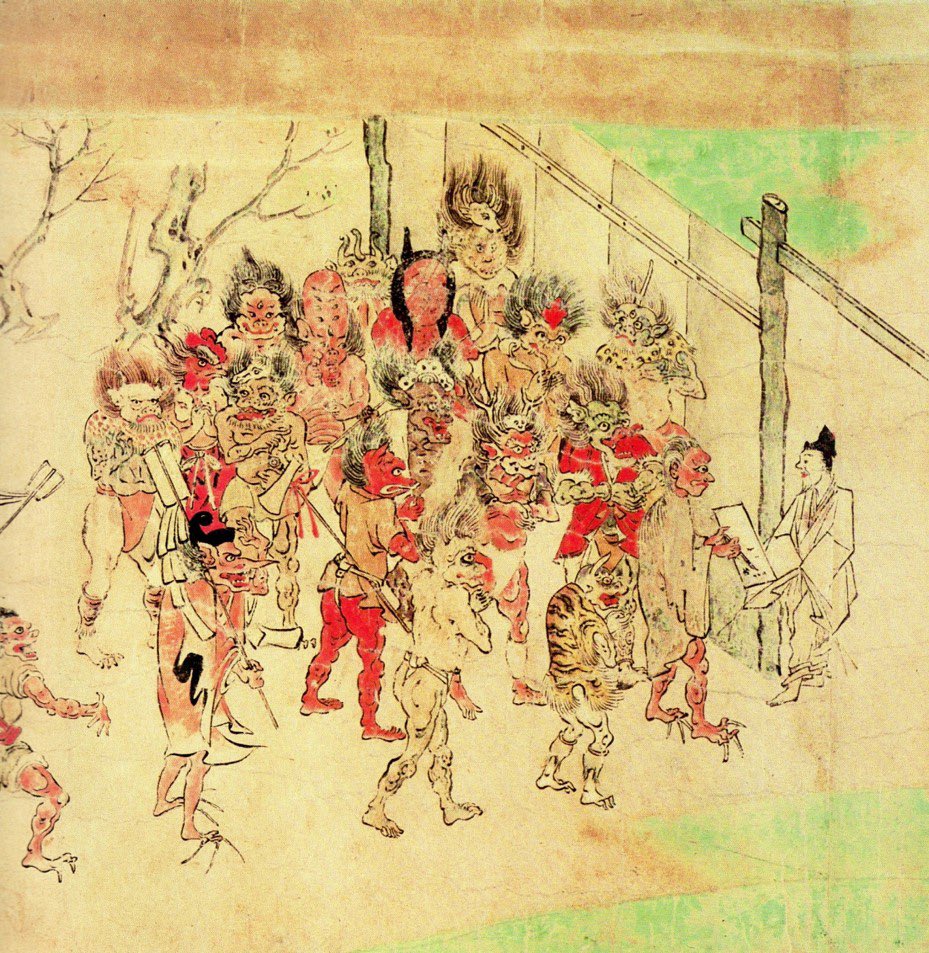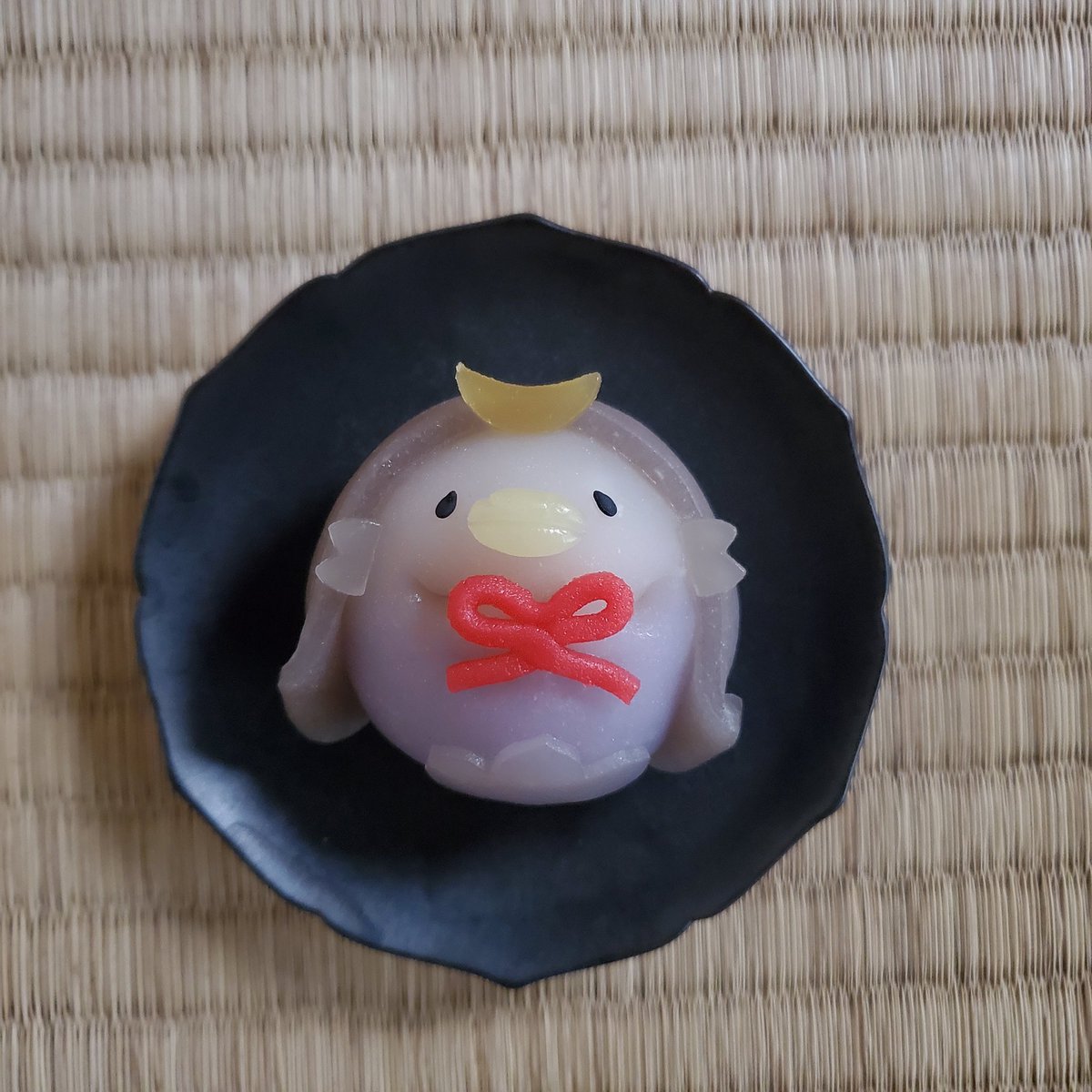
Relaxing at the spot Murasaki Shikibu (紫式部 ?973-1031?) likely wrote part of 'The Tale of Genji' (源氏物語).
#Kyoto #京都 #Rozanji #廬山寺 #MurasakiShikibu #紫式部 #kyototemples
#Kyoto #京都 #Rozanji #廬山寺 #MurasakiShikibu #紫式部 #kyototemples
The lady herself.
Murasaki Shikibu (紫式部 ?973-1031?), for some reason rendered in gold.
#Kyoto #京都 #Rozanji #廬山寺 #MurasakiShikibu #紫式部 #kyototemples

Murasaki Shikibu (紫式部 ?973-1031?), for some reason rendered in gold.
#Kyoto #京都 #Rozanji #廬山寺 #MurasakiShikibu #紫式部 #kyototemples


Rozan-ji's (廬山寺) 'Genji-no-tei' (源氏庭) was designed in 1965, inspired by Heian period gardens. Kikyō offer the only real colour.
White gravel is shaped into a pattern known as Genji Kumogata (源氏雲形), imitating the gold clouds seen on 'The Tale of Genji' scrolls.
#Japan



White gravel is shaped into a pattern known as Genji Kumogata (源氏雲形), imitating the gold clouds seen on 'The Tale of Genji' scrolls.
#Japan




on the flower pot
does the butterfly, too
hear Buddha's promise?
花桶に蝶も聞かよ一大事
-Kobayashi Issa (小林一茶).
Rozan-ji is famed for its bellflowers (桔梗 kikyō), but pots of fujibakama (藤袴) are also dotted about the grounds, a magnet for butterflies🦋🙌
#廬山寺 #Kyoto
does the butterfly, too
hear Buddha's promise?
花桶に蝶も聞かよ一大事
-Kobayashi Issa (小林一茶).
Rozan-ji is famed for its bellflowers (桔梗 kikyō), but pots of fujibakama (藤袴) are also dotted about the grounds, a magnet for butterflies🦋🙌
#廬山寺 #Kyoto
Behind Rozan-ji, hidden by camellia, is the dried up remains of Kumomizu-no-i (雲水ノ井). The well once stood in the grounds of Tōhoku-in (東北院), residence of Empress Shōshi.
Water from the well was used to mix the ink for the regular poetry contests hosted by the empress.



Water from the well was used to mix the ink for the regular poetry contests hosted by the empress.




How do we know this?
Well Shōshi (藤原彰子 988-1074) had some very famous literary ladies in waiting, including...Murasaki Shikibu (紫式部 ?973-1014?), Izumi Shikibu (和泉式部 ?976-?), Ise-no-Taifu (伊勢大輔 ?989-1060?) and Akazome Emon (赤染衛門 ?956-1041).
#Kyoto #平安時代



Well Shōshi (藤原彰子 988-1074) had some very famous literary ladies in waiting, including...Murasaki Shikibu (紫式部 ?973-1014?), Izumi Shikibu (和泉式部 ?976-?), Ise-no-Taifu (伊勢大輔 ?989-1060?) and Akazome Emon (赤染衛門 ?956-1041).
#Kyoto #平安時代




• • •
Missing some Tweet in this thread? You can try to
force a refresh


